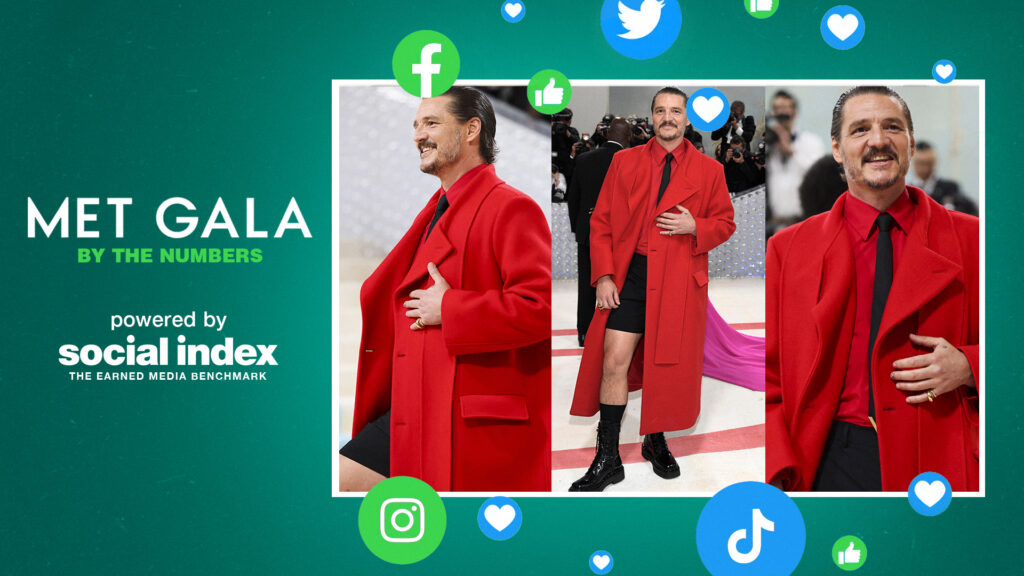With higher stakes than ever, the most recent Met Gala reportedly generated over $1 billion in earned media value (EMV) for brands—but how much did The Met itself, under pressure to boost its $329 million annual revenue to keep up with inflation, benefit from its signature event?
How The Met Leverages Likes To Drive Millions In Retail Sales
Until 2022, The Met was America’s most visited museum—in 2019, nearly 4.9 million visitors passed through its doors. Since 1948, The Met Gala has galvanized New York society, combining disparate celebrity culture segments with denizens of the City’s most rarified philanthropy circles. The goal to drive awareness of the institution and boost retail sales has become even more urgent post-pandemic since The Met’s visitor rates have dropped dramatically as New York City tourism fluctuated between 2020 and 2023. This tourism dip impacted every New York museum, but The Met is an institution with a global pop culture profile, synonymous with the marketing of New York as a city and a brand. For example, in 2015, just three exhibits generated $946 million in spending in New York City, per the museum. That power to draw tourists to Museum Mile means that the Met’s marketing success is heavily interdependent with New York City’s ability to market itself to tourists and keep them engaged.
Yet, as The Met faced the potential of inflationary concerns further depressing tourism in 2022, the brand’s retail push resulted in sales that far surpassed earnings from fluctuating visitor admissions. Although the Met saw fewer visitors in 2022 than before the pandemic, its retail sales and other paid activities far surpassed its membership and admissions earnings—moving the museum closer to addressing its pandemic-driven revenue shortfalls.
That means that brand awareness and earned media are critical for The Met, especially when retail sales are a significant portion of the institution’s revenue strategy. Fortunately for The Met, retail revenue has soared between 2020 and 2022, with retail and other auxiliary activities earnings going from $24.64 million in 2020 to $45.59 million in 2022, per Statista. That’s been accompanied by a surge in admissions and memberships post-pandemic, but retail remains the biggest source of income under endowments and grants.


That makes The Met Gala the institution’s biggest annual opportunity to leverage earned media to drive the kind of brand awareness that can lift retail sales and inspire tourism.
Per ComScore, this year’s gala generated 285 million total actions on content mentioning the event, with 916 million total video views across Facebook, Instagram, Twitter and TikTok. On the night of the event, the hashtag #MetGala drove more than 3.4 million mentions.
But how much does that matter to The Met’s brand awareness?

Per Social Index, the most liked recent Instagram share from The Met’s Instagram account as of May 8 generated over $241K in earned media value (EMV) for The Met, even though actor Pedro Pascal cheekily wore Valentino (which gained 39K likes from a similar share) to the Karl Lagerfeld-themed event. Within one week, a search for “Pedro Pascal Met Gala” yielded 6,690 news items. While Pascal promoted The Met Gala’s event with just one post from his Instagram profile nearly a week after the event, the post featuring his Met Gala outfit earned 1.3 million likes, doubling the attention garnered for his post promoting his Mandalorian return this March. That suggests that Pascal may have benefited from his Met Gala appearance as much as The Met did— and that extra attention might also drive new fans to other platforms like Disney+ or HBO, where Pascal stars in The Mandalorian and The Last of Us.
The Met Gala’s star power was also evident on other platforms, like Facebook. A single Facebook Reel share highlighting Jeremy Pope’s homage to Karl Lagerfeld provided The Met with over $29K in EMV, with just 709 shares.
As with influencers— The Met’s brand profile can drive retail sales.
Per Statista, 2022’s retail earnings for the Met almost doubled 2020’s earnings after the return of live events, as consumers, fans, and locals bought Met-branded products from the on-site store and online, which ranges from prints to household décor to books, online and in-person.
The Met’s marketing prowess in promoting its Gala likely plays a significant role in driving ROI for the museum at a critical juncture in its history. And one simple way The Met may be stretching its marketing budget is by allowing influencers, actors, and controversy to fly free on its social channels, thereby boosting its earned media value without paying for a single display ad.
Last year’s Met Gala raised $17.4 million for the museum, and this year’s revenue has not yet been revealed. But whatever this year’s event earned the Met in ticket sales and donations, it will be enhanced by the value of the media attention generated by the celebs, the controversy, and the brands highlighted on the red carpet.
The Takeaway For Marketers:
The success of The Met’s powerful global brand depends on tourism and retail sales. Like any brand, its goal is to drive awareness, optimize conversions and keep fans engaged. One of the easiest ways to do that is to build earned media value: allowing the press, fans, and social platforms to share brand messaging, images, and user-generated content that bolsters brand recognition and drives clicks. Accurately measuring what’s working and comparing it against what’s not is key to building a cost-effective earned media strategy.


